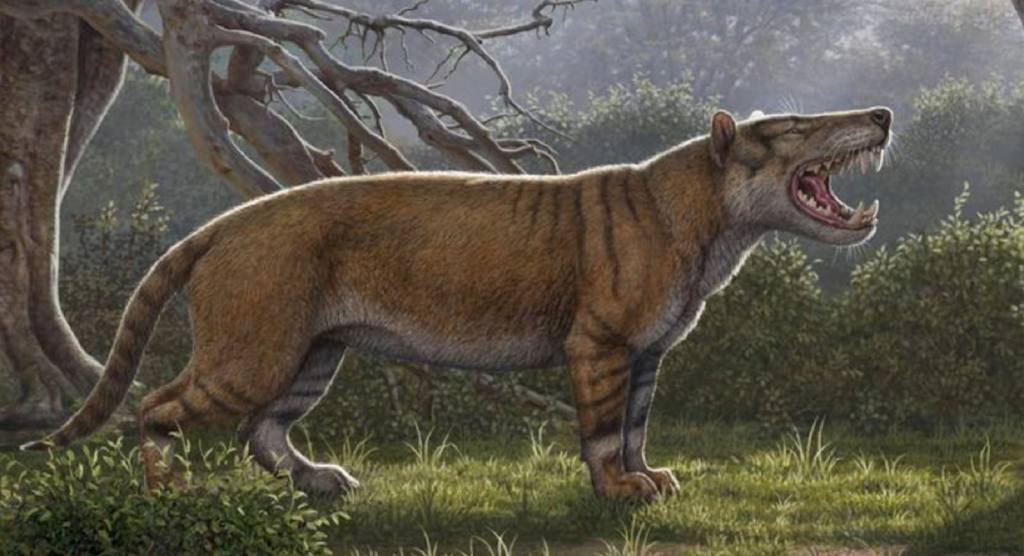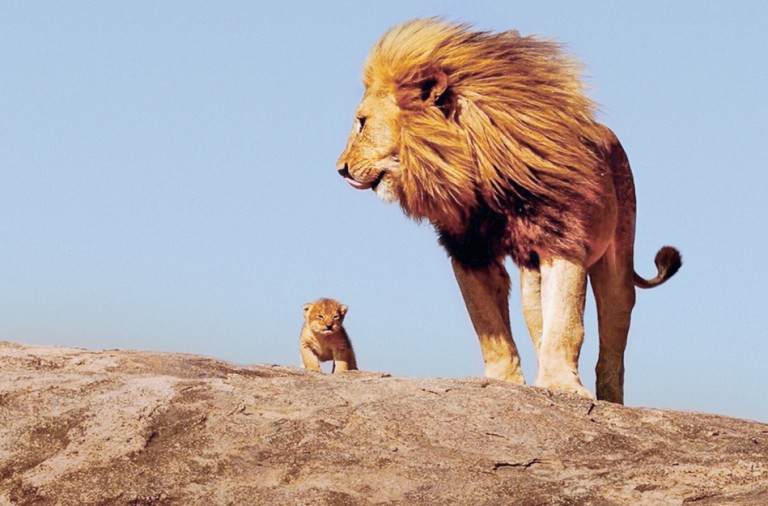The lion is undoubtedly an extraordinary animal, it is one of the Wild animals most recognized in the world for its physiognomy and characteristics that make it an alpha male among a pride of lionesses, that is why you must know in depth the Lion Taxonomy And here we leave you everything you need to know about it.

Thanks to the taxonomy of the lion, it has been possible to facilitate many evolutionary studies that serve to identify subspecies and to be able to develop plans that help protect threatened populations. Nowadays, genetic and morphological studies are put into practice that allow classifying and identifying some species of felines, such as the lion.
Basically, lions are part of a mammalian order that derives from the «Carnivores», these in turn belong directly to the genus of the Felidae family and the Pantherinae subfamily. Likewise, there is a group within the «Panthera spp» family in which leopards, jaguars and the Tiger but the lions are part of the panthera leo, like the species of lion that are extinct.
Through some of a phylogenetic nature, a support could be made that includes the taxonomic classification of the felines that are part of the Pantherinae subfamily, this being the one that encompasses the lion that we know today and, as was previously said, lions that have already been extinct.
Now, according to the lions themselves, they are represented strictly under the figure of the Panthera leo. To understand a little more about the extinct subspecies, it is known that they are part of what was called "Panthera leo fossilis", a species that lived in the early Middle Pleistocene inside many European caves.
It is also worth noting other subspecies such as the "Panthera leo vereshchagini", which also lived in the Pleistocene although its habitat was the caves of Eastern Siberia and Beringia.
Continuing the pattern of extinct lions, there was the subspecies of the "Panthera leo atrox" that lived in the Pleistocene and was considered the North American cave lion; That said, the subspecies of the "Panthera leo spelaea" that lived in the Upper Pleistocene epoch also comes into context.
According to the taxonomy of lions, it is necessary to highlight the "Panthera leo persica" that serves as a subspecies of the lion that could live in the south of the Asian continent. On the other hand, the "atlas lions" coexisted in North Africa under the scientific reference of "Panthera leo leo«. Locating us towards the west of Africa, the “Panthera leo senegalensis” was known.
The «Panthera leo azandica» was another subspecies of the African type that became extinct many years ago, it lived in the northeast of the Congo almost close to the Panthera leo nubica who lived on the same continent but located further east.
Similarly, on the African continent, Panthera leo bleyenbergh positioned itself in Southwest Africa and Panthera leo krugeri in the Southeast, which highlights the lion domain since prehistoric times. These were all extinct species of lion according to lion taxonomy, not to mention that the Cape lion was also a subspecies that lived in southwestern South Africa.
What are the morphological characters that are located in the taxonomy of lions?
According to studies carried out on the morphological elements of a lion from the invasive point of view, emphasis has been placed on its representative taxonomy of the morphology of the skull; but with regard to non-invasive characters, the study has been diverted towards the taxonomy of felines.
Nowadays, studies have been made of the cuticular patterns of lion hairs that belong to the Panthera species, such as that of the Panthera leo that represent the lion we know today.
It is said that the morphology of lion hairs can help to have more exact results regarding the taxonomy of the lion, which may have another representative source of morphological characters that are not necessarily osteological, the reason for this fact is that can facilitate the identification of various species that comprise the genus of the Panthera spp.
Following the pattern of study of the external morphology of the lion's hair at present, we have that it has interlocking cuticular scales, which constitute a wavy and irregular mosaic pattern, in addition to this it could be asserted that the external morphology of the cuticle of the hairs of a lion is quite similar to the morphology of a tiger of the species «Panthera tigris».
genetic characters
Thanks to the technology we know today, it has been possible to carry out various molecular analyzes adapting different genetic markers to obtain specific results by studying the taxonomy of a lion, as well as the separation of various species of felines and subspecies of lions. In order to study in depth the genetics of a lion in a non-invasive way, a sample of its feces is collected and its DNA is extracted.
A fundamental aspect in the genetics of lions is the Cytochrome B which turns out to be a mitochondrial genetic marker that over the years has made it possible to separate some species of felines such as the White Tiger. An interesting fact is that the microsatellites that are used to follow a genetic pattern can be of great help to complement the studies of the taxonomy of the lion and the classification of its species in particular.
Going back several years in 2001, a study was able to determine that by means of the mitochondrial marker Cytochrome B, the species with the Characteristics of cats cats, leopards and lions. From that moment on, this gene began to be taken as a great tool that allowed scientists to carry out some genetic distance analysis and thus be able to differentiate species that would be useful in taxonomic studies for the family of Felidae.
Lion taxonomy today
Nowadays, respecting non-invasive methods for studying the taxonomy of a lion, its DNA is taken through its hair, saliva, feces and urine, which is fantastic for scientists because it is easily accessible and not dangerous for the species in question.
By means of these genetic analyses, some species have been identified, which is of great importance to generate scientific advances in this taxonomy without causing any type of damage to the lions.
To conclude, it is necessary that the studies linked to the Taxonomic classification of animals they constitute the genetic settlements of many species, and as is the case with felines, they serve to develop conservation plans and the correct management of species that are in danger of extinction.


